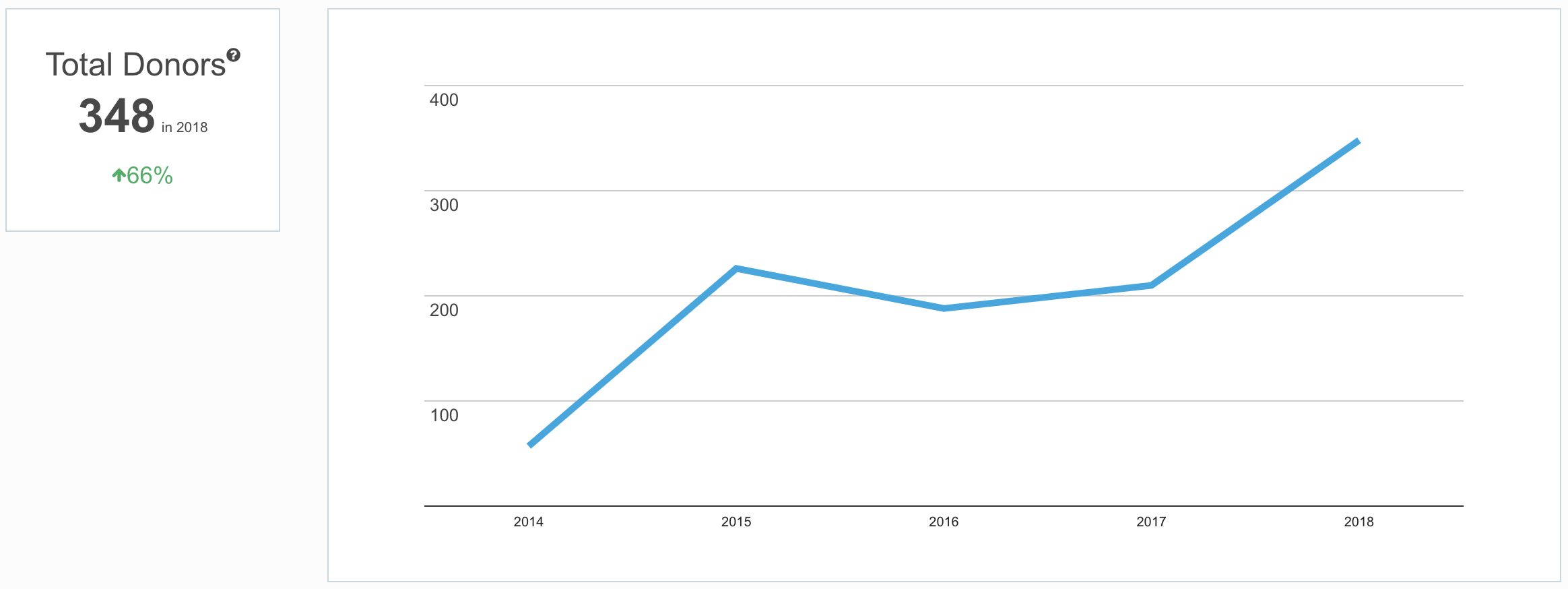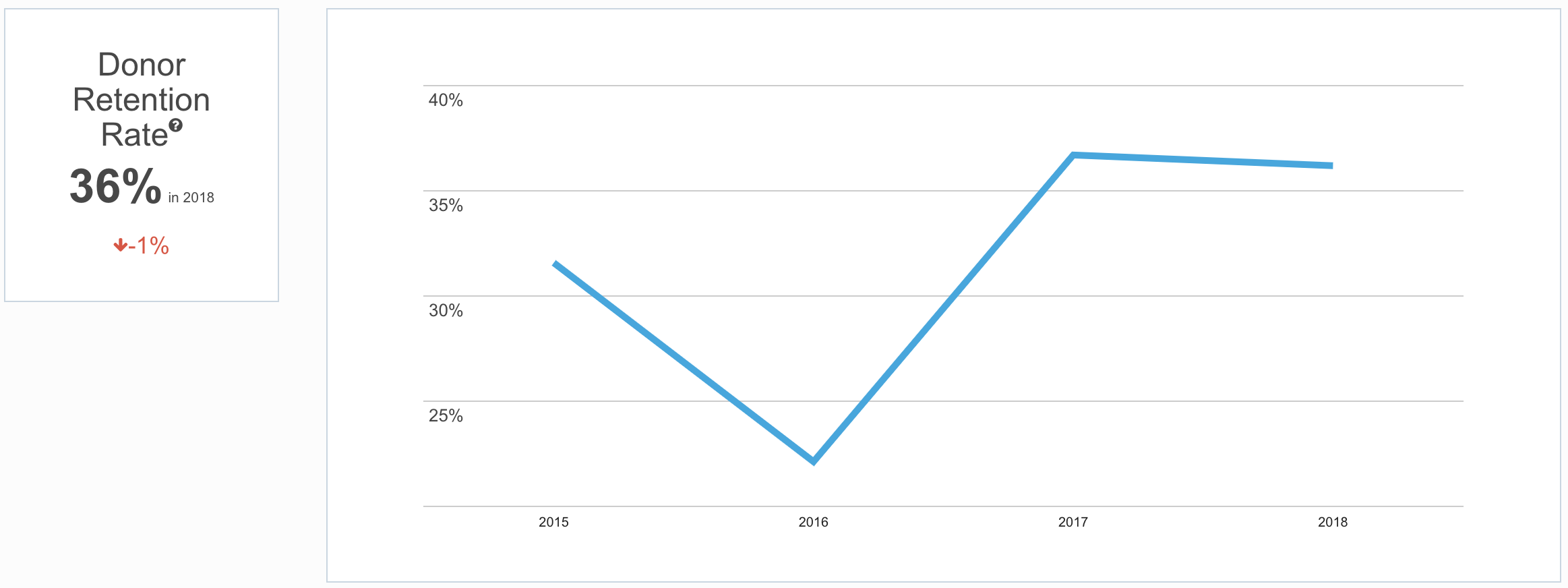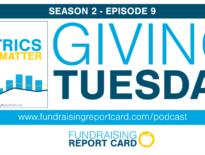Yes, it’s among us — cooler weather, shorter days, holiday music in the department stores — the end of year is here.
Over the past few weeks our team has shared with you a few resources meant to support you in your year end push. We discussed #GivingTuesday on the Metrics that Matter podcast, shared tips and tricks for reporting to the board, and over on the SmartIdeas blog, Greg Warner has been preaching the importance of Engagement Fundraising.
With all that said, there’s still one topic we have yet to immerse ourselves in — goal setting.
Not all organizations run on the calendar year, but if yours does, you know that we’ve entered “crunch time.” Budgets are set, the fundraising calendar is in place, and 2019 is looking you squarely in the eyes. During these last few weeks of the calendar year it’s important you feel confident in your fundraising goal for 2019.
Here at Fundraising Report Card we pride ourselves on discussing data-driven topics. It’s our stance that in the year 2018 all nonprofits (small, large, and anywhere in between), should be able to leverage their historical data to inform their future decision making (i.e. descriptive analytics). Let’s apply that concept to goal setting. Gone are the days of guesses and hunches, we can instead inform our goal setting with a few key metrics.
Let’s discuss three.
Total dollars raised & total donors
K.I.S.S. We’ve all heard it at some point in our lives. Keep it simple stupid.
It may not be the most eloquent or diplomatic way to say it, but when it comes to diving into data (especially when you’re a professional fundraiser and not a data analyst), keeping it simple is the name of the game.
The most important fundraising metric you need to have is your organization’s total dollars raised and total number of donors. Ideally, you’ll want to review a 5 year trend of these two metrics, and you’ll want each value (the total dollars raised and total count of donors) for each year.
For example, look at this image, or click here to view the interactive chart:
With this nifty data visualization, you can clearly see a trend in total dollars raised. What about the total number of donors?
The two visualizations tell a similar but different story. If you were in charge at this organization how would you interpret the data? Both reports show incredible growth. Would that inspire you to set a more ambitious fundraising goal for 2019? You may set your sights a bit higher than initially thought because your trajectory suggests you can keep growing.
Conversely, you may realize that this extreme rate of growth is unsustainable and that in 2019 you’re going to lower the growth target because it is unreasonable to maintain 60%+ growth rates.
The idea here is that you need a baseline, and that baseline is not only a snapshot of last year. Look for trends in your baseline fundraising metrics (total dollars raised and total count of donors) and use those trends to inform your goal in the coming year.
Donor retention rate
You’d be hard pressed to make it through one of my blog posts without reading the words “retention rate,” it’s truly that important. Whether you are a nonprofit retaining donors, or a for-profit retaining customers, maintaining your existing base of support is critically important. Plus, in a similar vein as above, donor retention rate is one of the “simple” metrics you should have access to.
For a deeper dive on retention (both donor and donation), you can click here.
Otherwise, for our discussion here, we’ll focus on how and why you should review donor retention rate when setting a 2019 fundraising goal.
The first thing to keep in mind is that donor retention is a measure of how well you are maintaining relationships with your constituency. If you review a five year trend of donor retention rates and you see it going down, you may reign in your 2019 fundraising goal and instead focus on ways to secure your existing base of support.
On the opposite end of the spectrum, if your organization’s five year trends look positive you should feel more confident raising the bar in 2019.
Take a look at this organization’s donor retention rate:
If your five year report looked like this, what would you do? Obviously there is room for improvement in terms of boosting year over year donor retention, but how can you leverage this information to inform your fundraising goals in 2019?
K.I.S.S! Since this organization is struggling to increase donor retention rate, a relevant fundraising goal for 2019 may be; to increase donor retention rate by 4 basis points to 40%.
As you can see, the goal is simple, to the point, attainable, and measurable — all necessary characteristics of a worthy goal.
Applying this at your shop
Data-driven goal setting is not that complex or abstract!
To set strong, compelling, and attainable fundraising goals you need to review trends in historical performance. It’s my suggestion that you focus your descriptive analysis on the three key metrics outlined above; total dollars raised, total count of donors, and donor retention rate.
However, if you’ve read this post and are unimpressed have no fear! Data-driven analysis can get much more complex. If you have the bandwidth, aptitude, and desire, please consider reviewing an article like this one from our friends at McKinsey & Company.
But, if you’re like me (pressed for time, on a tight budget, etc, etc,) I trust you will find these simple tactics useful amidst all the end of year hubbub!






